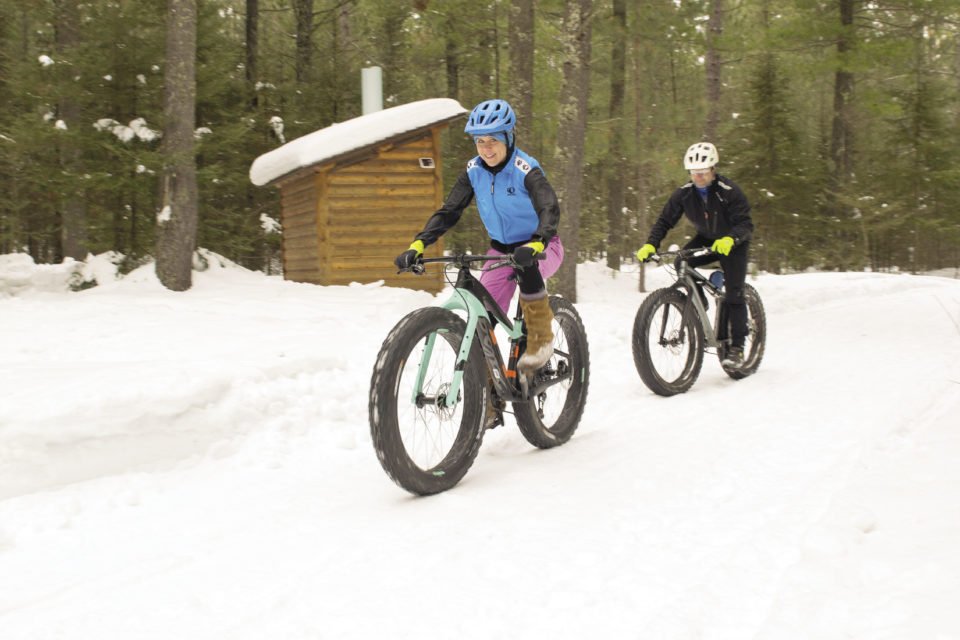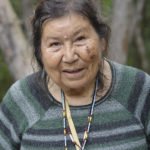Inside the Donald D. Ferguson Demonstration Forest, located approximately 8 miles northwest of Two Harbors on the Drummond Grade, Lake County Forestry strikes a balance between producing forest products and providing recreation.
Lake County manages 150,000 acres of forest, with 480 acres designated as Demonstration Forest. Here the county shows how forests can be utilized and what they can provide. These resources include timber and fiber for industry purposes, wildlife habitat, cultural and aesthetic values, recreation purposes and biodiversity, according to documents inside the Lake County Forestry office.
“There’s always that tension there between both groups,” said Nate Eide, land commissioner with Lake County Forestry. “That doesn’t go away, but with a little education on both sides, it’s doable.”
In the Demonstration Forest, you’ll find 8 miles of non-motorized, multi-use trails for hiking and bicycling, as well as a spur of the Superior Hiking Trail. Other already-created trails for ATVs and snowmobiles pass through the forest.
Non-motorized trails are groomed in the snow for snowshoes and cross-country skis—hiking boots aren’t allowed in the snow for fear of creating holes that can’t be repaired and could become dangerous to dogs or fat-tire bicycles.
But wood is still important, both in and outside of the forest. Loggers in the Demonstration Forest use sustainable practices: they’re careful not to damage any water sources, such as federally protected wetlands or streams, said Dave Cizmas, recreation forester. Even the logging itself is carefully monitored.
“We don’t just cut and then walk away,” Cizmas said.
In the event of harvesting wood, professionals replant when necessary. When the tree species doesn’t require replanting—such as trees that mostly grow in the roots, or others that naturally seed—professionals still monitor the area.
The loggers are also helping the foresters.
“Without them, you couldn’t manage the forest,” Eide said.
For example, birch trees only live for about 70 years. Insects like the spruce budworm are a threat to spruce and balsam fir trees.
“There’s always a fire risk,” Cizmas said. “But in a managed forest, it’s dramatically lower.”
Besides, if the forest didn’t generate income through logging, it would be sold off as private land and no longer be available for public use, Cizmas said. The logging revenue largely funds the forestry office.
Professionals in the office check on logging operations at least once a week. In managing the forest, they create plenty of natural space for wildlife, whether that’s new forest growth or a temporary clearing. Hikers and snowmobilers don’t just chance coming across moose, deer or other animals; they may also come across logging in the process.
Either hiking trails are closed while loggers are at work, or the staff puts up signs to educate both the people on the trails and the loggers in the forest. If loggers are in the process of cutting down trees, they won’t be hard to find.
“Logging equipment isn’t quiet,” Cizmas said with a laugh.
People on the trails are advised to stay at least 200 feet from equipment in the logging process. In some instances, logging becomes one more demonstration in the Demonstration Forest.
“Some people stop and watch,” Eide said. “They’ve never seen that happen before.”
Winter happens to be the busiest season for loggers in the Demonstration Forest. While loggers are permitted to cut trees that grow in the designated wetlands, doing so when the ground is frozen has the least environmental impact.
Eide and Cizmas noted that the ground hasn’t frozen as fast this winter as in the past, which loggers have had to work around. It’s hard to say whether this is related to climate change, but the forestry department is considering a possible warmer climate in the future. Cizmas spoke of plans to plant more oak trees, a tree species from a little farther south that already does well in the forest, but would do even better in warmer temperatures.
Cizmas said people taking on the trails in the Demonstration Forest can expect an easy hike or ride that’s a lot less challenging than hikes with steeper inclines. The trails also provide a quiet wilderness away from the bustle of the city.
To learn more about the Donald D. Ferguson Demonstration Forest, visit: co.lake.mn.us.—Tammy Bain




